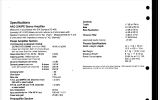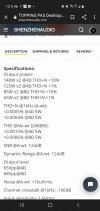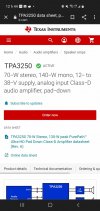TheWalkman
Senior Member
- Joined
- Jan 9, 2020
- Messages
- 384
- Likes
- 1,007
Bruce,Even the bargain basement Aiyima A07, with its notoriously poor thermal management, won't shut down while playing music at any but downright deafening levels -- music is not a steady sine wave from a piece of test gear!
I'm curious where you got, "notoriously poor thermal management" from. I have both an A07 and A04 which I switch between cranking them for hours on end (90 + db), driving a pair of Elac Reference speakers. I'm powering them both with a Mean Well, 36x 3.4A power brick. Neither amp gets even warm to the touch after extended play.
Granted, if you're running a sine wave, test signal through them, perhaps they would overheat. To the earlier point in this thread regarding power supplies, real world, listening scenarios would, I assert, need the full power of amps for a small amount of time and efficient, Class D amps like the Aiyimas or this Topping, I'd speculate, do a great job of supplying the transient power levels.
This, too, is the reason that a smaller, quality power brick can adequately power the amps (while confusing a lot of folks on how a 150 W power brick can power them adequately.
FWIW, I couldn't resist and pulled the trigger on a PA5 to add to my collection. It's on the plane now. I'll be curious to see how the PA5 stacks up to the Aiyimas i.e. can I tell any difference or am I chasing diminishing returns. With N+1 amps in my collection, I wonder if it would pay to open up a Class D Amp Museum? I certainly have enough relics to do so.
Fingers crossed, but I'm hoping this PA5 will be my endgame and I can resist the Siren's pull of the Benchmark.
Cheers
Last edited:




